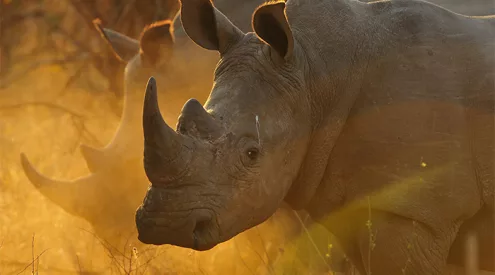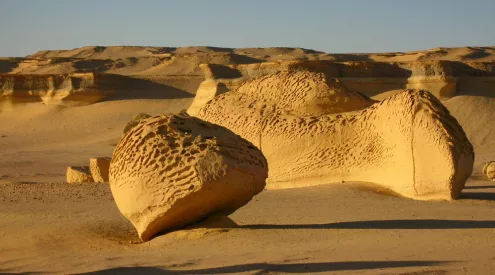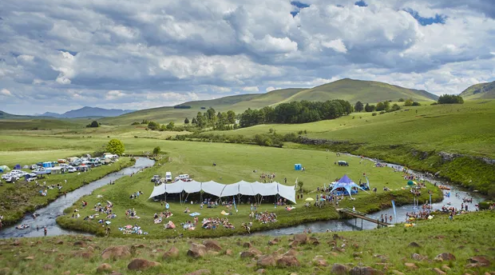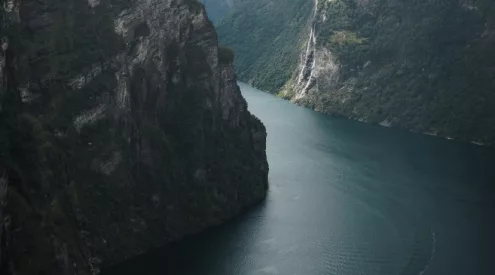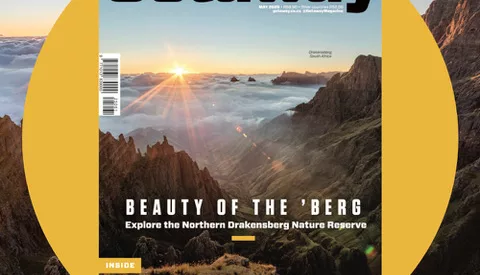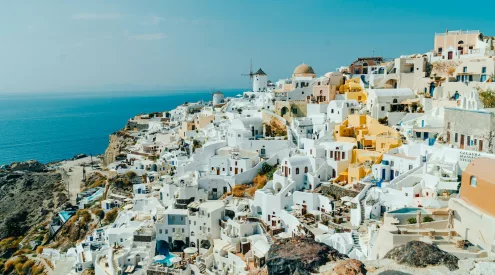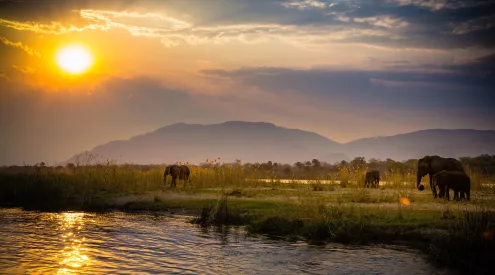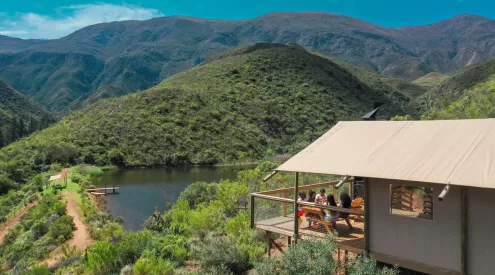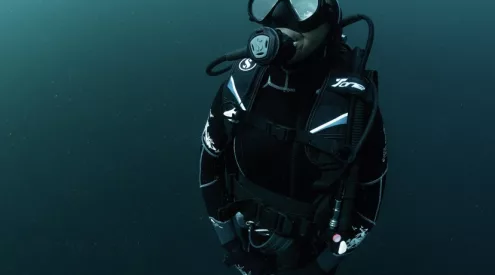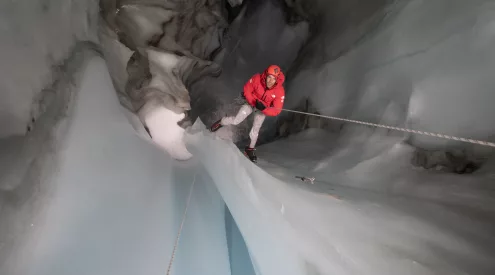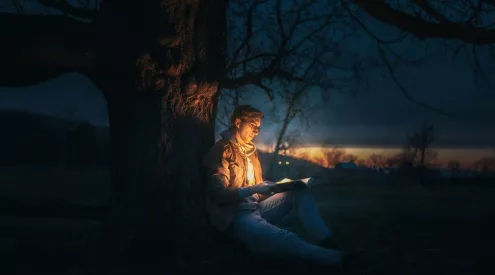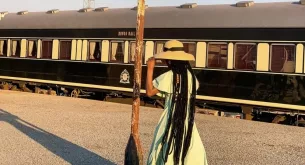3-12 April (Day 35-44) Tsumeb towards Rundu and into the Caprivi
We took the road from Tsumeb to Grootfontein on Saturday, about 60 km on. The road was a pleasure, the scenery amazing. The dense bushveld covers green hills, the air humid, black clouds in the distance carrying the promise of rain. The farmer who gave us a lift to Otavi a couple of days back, Gerhard Engelbrecht, invited us to stay on his farm when we got to Grootfontein. Incidentally, the Grootfontein meteorite is located on his farm and we were happy to take the 20 km detour to his farm, free accommodation and another great Namibian landmark made it worth our while.
We were once again generously hosted and late in the afternoon took a leisurely ride to the site where the meteorite is located. The meteorite is the largest of its kind in the world and weighs in at about 50 tons, according to the information provided on site. One can only imagine what consternation it must have caused the day it hit planet earth. It must have been quite a sight!
When we woke up on Sunday morning, we had to turn our clocks back one hour – it was that time of the year in Namibia when everybody switches to winter time. The net effect for us was that we cheated ourselves out of an hour of sleep, we had to go to the shops in town to stock up on supplies and simply had to wait an extra hour before we could get going.
From Grootfontein we took the road to Rundu, still a good 270 km on and not a single town in between. About 40 km out of Rundu big Makalani palms are to be seen everywhere at the side of the road, a sure sign that we were heading into a more tropical climate. Conditions were overcast with only a slight breeze from the north and the going was easy, but we had to call it a day at Roy’s Camp, located about 60 km out of Grootfontein. We had no choice but to camp there for the night, the next campsite being another 70 km down the road. As always in Namibia, the camp was filled mostly by Germans in rented white Toyota Hilux double cabs fitted with roof tents. Apart from South Africans, the remaining percentage of tourists from outside the country must be made up of at least 90 % Germans, I suppose the historic link is the main attraction.
The next day we kept going towards Rundu and once again had a very comfortable ride of about 70 km until we came to a place called Mururani Campsite, the last campsite before Rundu. We were once again disappointed that we could not continue a bit further since this left us with a long 130 km to Rundu for the next day, but the alternative was to sleep in the bush by the side of the road with the threat of heavy rains in the afternoon, so we just took what we could get and settled at the comfortable campsite for the night. The owner, Joseph Lewis was very helpful and kind to us and treated us to some great kudu steaks on the braai.
At Mururani there is a livestock disease checkpoint, the so-called Red Line. When we left the campsite early the next morning and crossed the line it was as if we crossed into another country. Commercial farms made way for traditional villages, with traditional huts built from wood and mud with thatched grass roofs as far as we went. The people here live a simple life, dependant on subsistence farming to make a living. Small patches of maize and sorghum are scattered between the huts. It is clear that people here are dependant on the yield of their crops for sustenance and not profit. Enough grain to make it to the next harvesting season is probably as big a profit as these subsistence farmers can hope for.
As we cycled the long road towards Rundu we saw lots of smiling faces, people waving in friendly greeting as far as we went. We arrived at Rundu at about 4 noon and set about the usual tasks of buying food, visiting a hardware store and finally finding a place to camp. Rundu is a typical border town, the Portuguese influence from Angola across the river evident everywhere you go.
From Rundu we continued east, not really knowing where we would spend the night. The area to the east of Rundu is much less densely populated as opposed to the area to the south-west and we cycled for long distances on the quiet road lined with thick bush, only occasionally encountering a village or a herdsman with his cattle. A storm brewed ahead of us in the road by late afternoon and we were very fortunate to come to a sign indicating the way to Shankara Lodge, only 4 km from the main road. We had hardly arrived there before the heavens opened. A very friendly couple from Windhoek invited us to their tent and offered us some beers which we happily accepted and sipped on until the storm has passed and we could pitch our tent, cook dinner and go to bed.
Leaving Shankara the next day we headed to Popa Falls, our next scheduled stop. This area is also sparsely populated, the odd herdsman with his cattle our only companions on the road. At Katere, about 35 from where we set of in the morning we found only a primary school and one cuca shop, even though it is indicated as a town on the map. Fortunately even these little shops stock ice cold Cokes and we indulged in a cold Coke, sitting in front of the shop talking to the few villagers gathered there.
In the afternoon we once again saw a massive storm brooding to the east and this time we were not so lucky as we were the previous day. About 15 km before the tiny settlement of Divundu, the heavens opened and we had to cycle in the driving rain for about 40 minutes until we finally managed to reach Divundu where we sat in front of the only shop like wet chickens, waiting for the rains to stop. Eventually it did and we could make our way to the Popa Falls campsite. On arrival we went to inspect the camping area, only to find that virtually the whole campsite was flooded. We moved on to the next lodge and came to a place called Rainbow Lodge. The place is rustic with no frills or fancy add-ons, but very reasonably priced and we booked in for two nights, the plan was to take a rest day here. We made camp next Kavango River, the great sunset once again a highlight.
The following day we just relaxed, trying a bit of fishing without any success. As the sun was setting over the Kavango, we made a fire to braai on and just settled into our seats when an awful thing happened. The big bulldog which belongs to the owners of the lodge was fooling around in the camp, moving amongst the campers, playing with some of the overlanders who were busy pitching their tents. The dog got bored and on his way back to the bar where his owners were sitting, had a drink of water from the river, less than twenty metres from where we were sitting. The next moment we herd a massive splash in the water and then just as suddenly as all of this has happened, it was quiet again. With shock we realized that the dog had been taken by a crocodile, it did not even make a sound, such was the ruthless efficiency of this pre-historic predator. I suppose this was a good wake-up call for all of us, it could so easily have been a human straying to close to the water’s edge.
Since I had a bit of a cold, we decided to take an extra day of and on Sunday we finally got going again, entering the Caprivi Strip. Unfortunately I had to give up after about an hour, the bug not out of my body yet and unable to continue cycling. I decided to get a lift to Kongola, where my friend James Chapman has arranged accommodation for us with his father, James Chapman Sr., who owns the filling station here. I will rest here for two days and wait for the other guys to catch up, hoping to shake the bug of. From here we will be cycling to Katima Mulilo, our time in Namibia now fast drawing towards an end.

